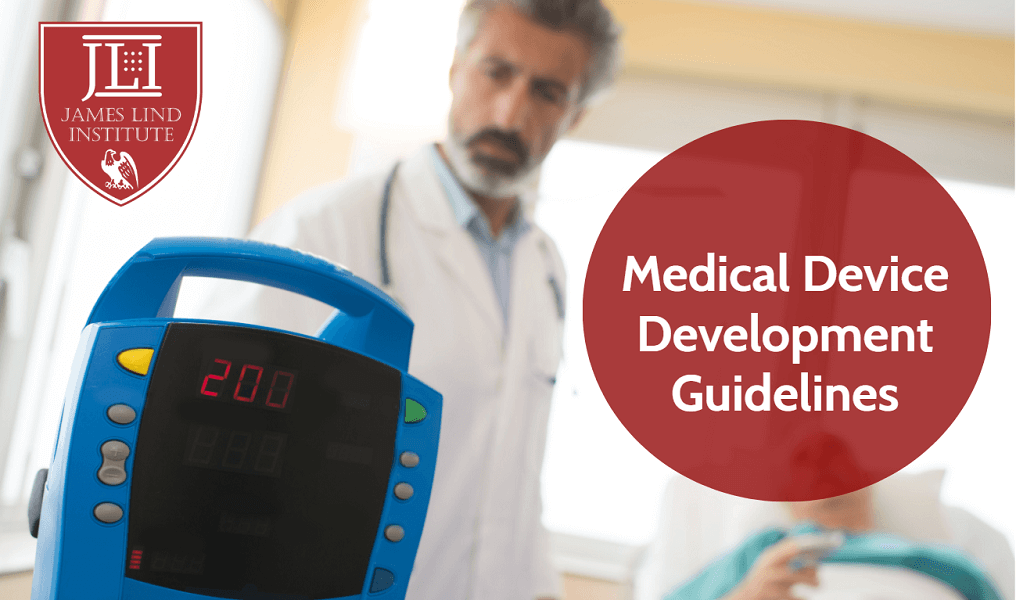An effective medical device complies with healthcare regulations and addresses solution specifications to deliver functionalities that satisfy the needs of the end user. Professionals employed from technical and non-technical background of life science, business administration or computer science need to understand the importance of medical device development guidelines.
Medical Device Development
Medical device development processes are complex wrapped in regulations, specifications and application requirements which are balanced and adhered to provide the end user with a successful product. The discovery, ideation and innovation of new medical devices targets the unmet market needs that can help monitor and manage public health; improve healthcare delivery or enable better administration of treatments. The first step of identifying market needs and multi-faceted complex process of device development is imperative to bring a medical device into the market. Design and development is a crucial phase for a successful and marketable medical device. Innovation starts with analyzing and identifying the market needs to deliver a solution in a new or better way for monitoring health, enhancing healthcare delivery solutions, improving devices or technologies that support healthy life.
A well-defined design of medical device should comply with the essential regulatory requirements. Safety is considered a priority in designing a medical device to meet reliability, functionality and safety goals. Adequate testing is the best practice which is carried out throughout the development process to define a test strategy and minimize testing costs. Medical device testing should validate, verify and provide evidence to ensure that all the requirements and needs of the end user are met and satisfied. The evaluation design and specific tests depends on the type of device, regulations, standards and best practices applied. Medical device classification enforced by law is based on the risk associated with usage. Successful product conceptualization completes the discovery phase to proceed further to approval and commercialization stage. Medical device standards enforced by law are helpful in specifying and evaluating the requirement for materials and equipment, design of biomedical tools and performance parameters.
Importance of Guidelines
Developing and introducing newly designed medical devices into the market involves building a product from an innovative idea to be offered to the masses. The designers and developers collaboratively work to evaluate functional requirements or needs, specifications along with managing risk and assuring quality. Compliance with the internationally accepted risk management standards is critical for the medical device industry. Every medical device manufacturer must have established risk management activities, procedures, processes and outputs for every stage of design and development. Manufacturers must establish quality and risk management along with quality assurance systems that impact every phase of the device lifecycle.
Quality assurance systems and regulatory framework for design, development, production, installation and servicing allows manufacturers to follow best practices in establishing suitable safety and efficacy requirements for a device, developing and designing methods or procedures for production and distribution of devices. Policies, processes and procedures for evaluating quality, managing design activities and making adjustments for errors and shortcomings throughout the development process are required in manufacturing settings. The regulatory standards guide the design development and testing process of medical devices. Medical device manufacturers face challenges related to handling regulation on a national basis due to existing differences among various countries.
A comprehensive management system serves as a framework with a set of standards for processes, procedures and responsibilities aimed to meet the target quality goals that comply with regulatory practices and standard guidelines. The compliance to regulation framework helps implement design control on a wide variety of devices and deliver flexibility to the internal design and development process. The guideline covers design, production, usage, distribution, maintenance and obsolescence during the entire life of the medical device. This is essential to demonstrate the ability to provide products and services that comply with regulatory requirements and consistently meet customer demands.
Online Course at JLI
James Lind Institute (JLI) provides an online program – Post Graduate Diploma in Clinical Research to understand medical device development process.
For more information please visit: www.jli.edu.in


